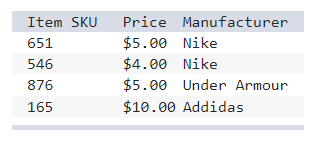Navigation » List of Schools, Subjects, and Courses » Accounting 230 – Accounting Information Systems » Assignments » Chapter 4 Assignment
With Answers Good news! We are showing you only an excerpt of our suggested answer to this question. Should you need our help in customizing an answer to this question, feel free to send us an email at  or chat with our customer service representative.
or chat with our customer service representative.
Chapter 4 Assignment
Chapter 4 Assignment
1. Which of the following is not one of the advantages relational data models have over other data models?
2. What kind of data model has the greatest ability to scale?
3 What kind data model is most commonly used as a basis for today’s enterprise systems?
4. Which of the following statements about the requirements of table design is incorrect?
5. Which of the following statements best describes the entity integrity rule?
6 Which of the following items can best be described as an “Agent” in the REA data model?
7. Which of the following is not accurate?
8. A foreign key in a database table is always:
9. Classes in a relational database model for AISs are typically grouped into all of the following categories except:
10. Which of the following Microsoft Access objects is used to integrate data from one or more queries and/or tables in order to present information useful to decision makers?
11. In Microsoft Access, we use tables in a database for:
12. Which of the following items can best be described as an “Event” in the REA data model?
13. In Microsoft Access, we use “Forms” for:
14. The property of the primary key in a table in Microsoft Access should be set to:
15 Consider the following SQL query. Which item best describes the results of the query?
SELECT VendorID, Sum(POTotal)
FROM [Purchase Orders]
GROUP BY VendorID
16 Using the following table what will result from the SQL command “SELECT Item SKU, Price”?

17 A Query in a program language such as Structured Query Language (SQL) can be used to
18 ERPs are useful to auditors for which of the following reasons?
19. Which of the following is not a likely module of an Enterprise Reporting System (ERP)?
20. Which of the following best describes cloud computing?

